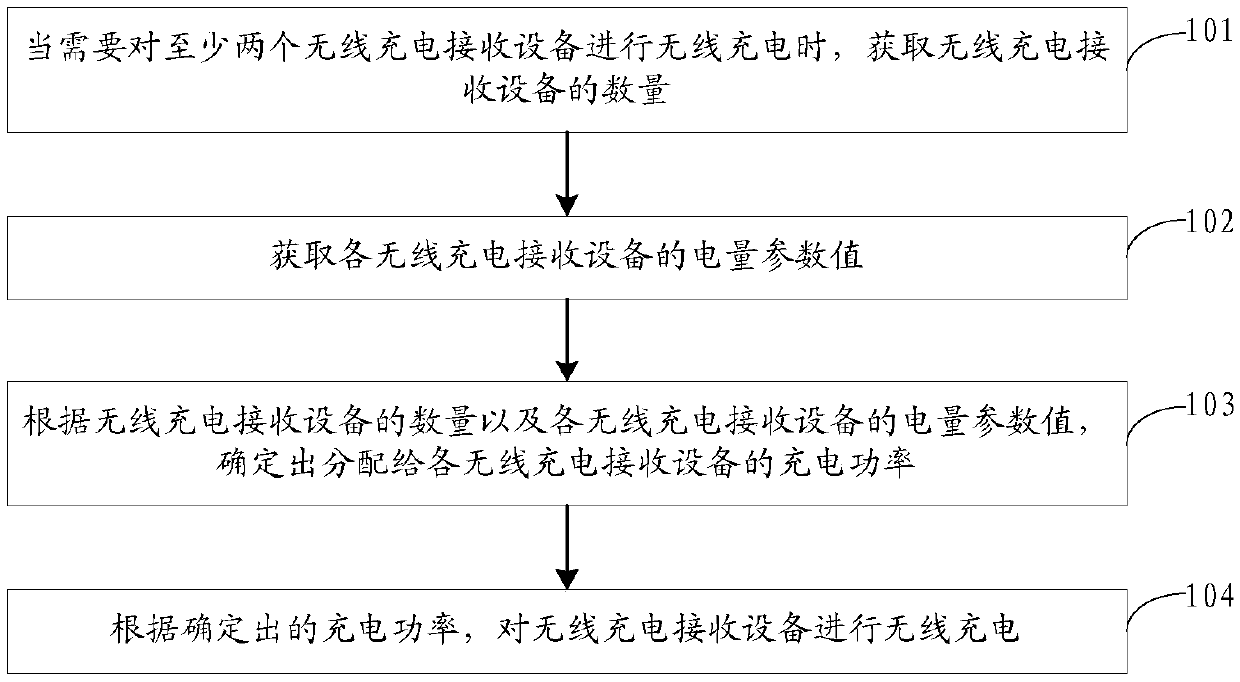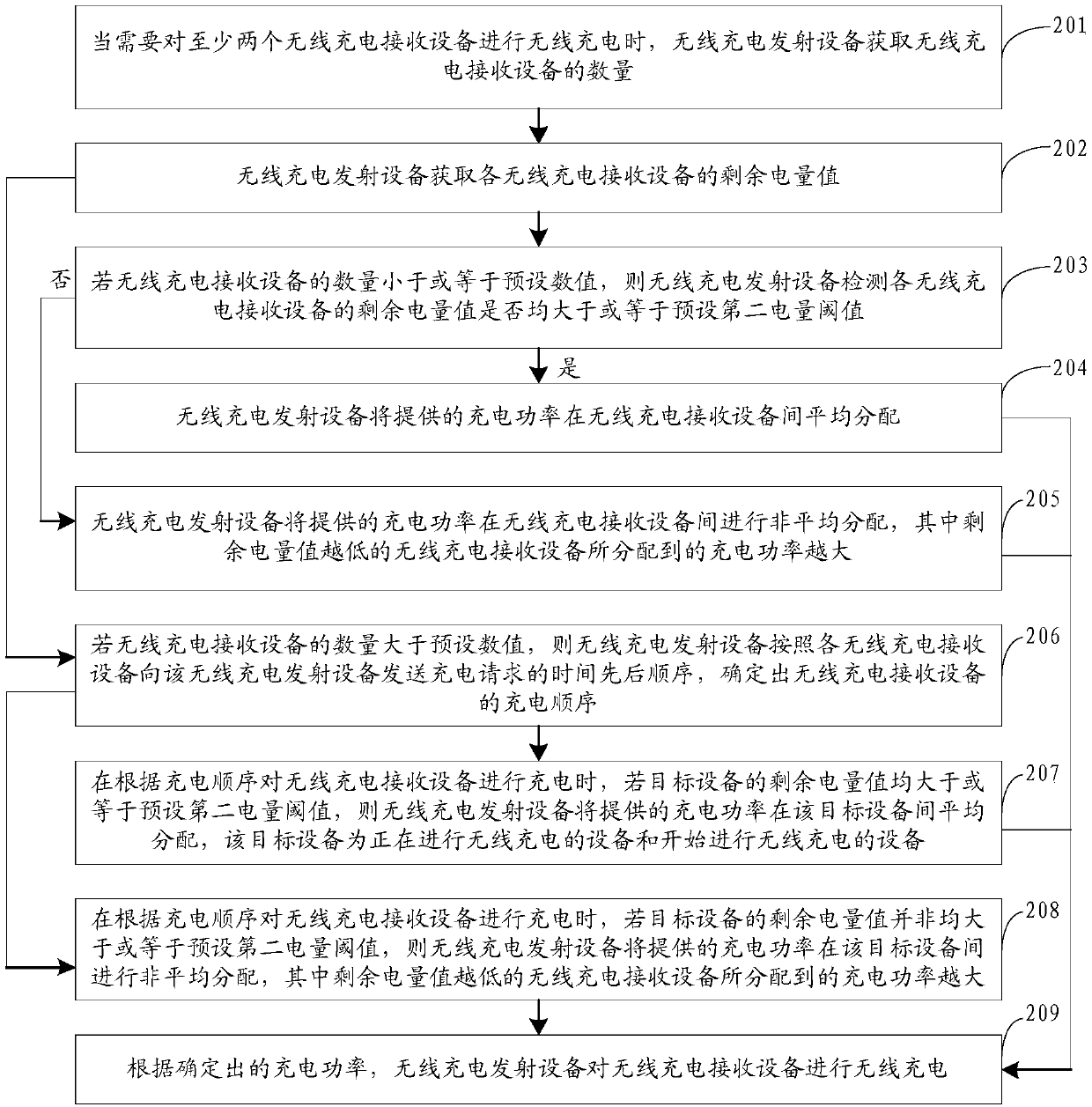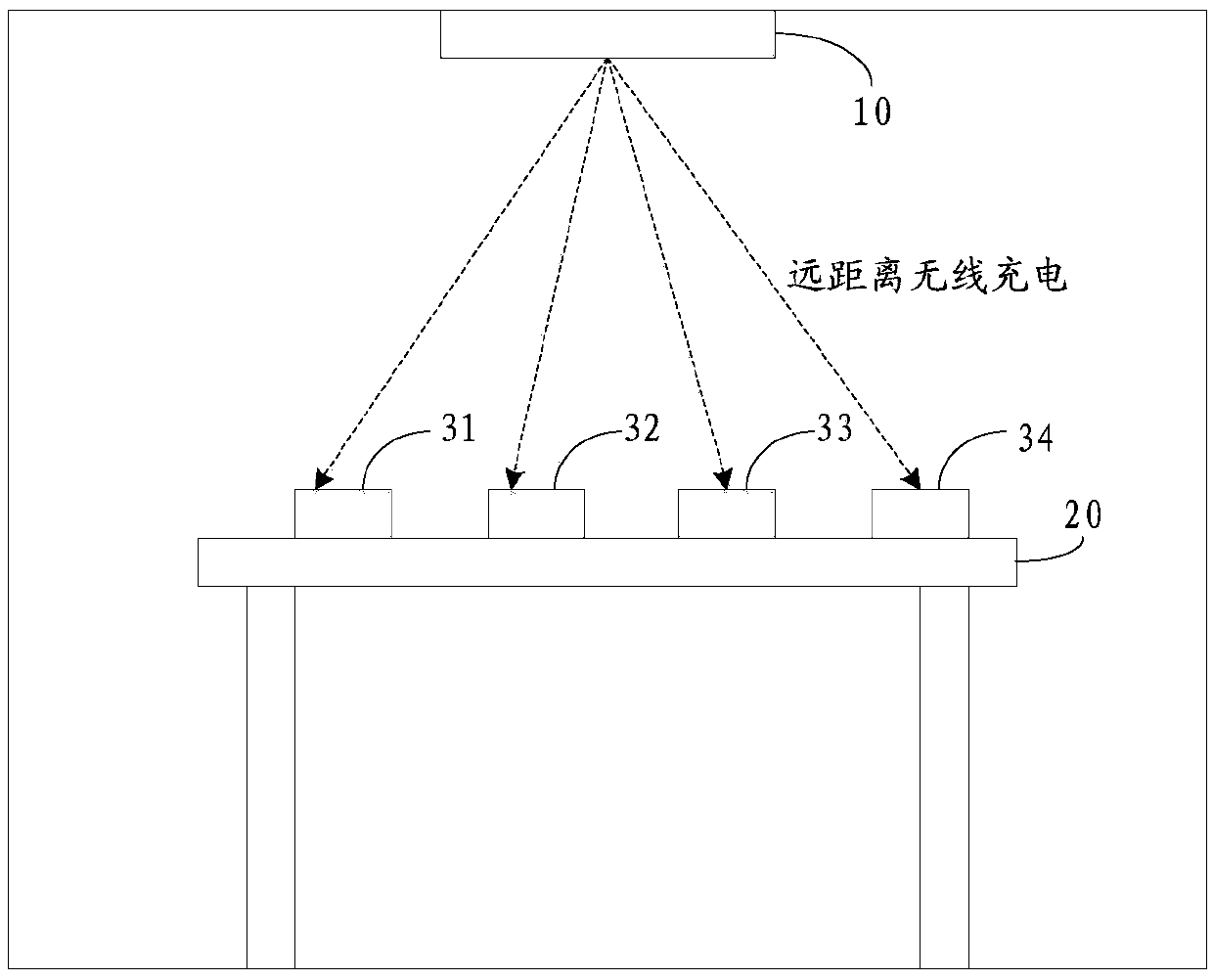Wireless charging method and device, storage medium and wireless charging transmitting equipment
A technology for wireless charging and transmitting equipment, applied in circuit devices, battery circuit devices, current collectors, etc., can solve problems such as low power supply efficiency
- Summary
- Abstract
- Description
- Claims
- Application Information
AI Technical Summary
Problems solved by technology
Method used
Image
Examples
Embodiment Construction
[0024] Referring to the drawings, where like reference numerals represent like components, the principles of the present invention are exemplified by being implemented in a suitable computing environment. The following description is based on illustrated specific embodiments of the invention, which should not be construed as limiting other specific embodiments of the invention not described in detail herein.
[0025] It can be understood that, the execution subject of the embodiment of the present application may be a wireless charging transmitting device.
[0026] see figure 1 , figure 1 It is a schematic flow chart of the wireless charging method provided by the embodiment of this application, and the process may include:
[0027] In 101, when at least two wireless charging receiving devices need to be wirelessly charged, the number of wireless charging receiving devices is acquired.
[0028] With the continuous development of technology, more and more electronic devices ...
PUM
 Login to View More
Login to View More Abstract
Description
Claims
Application Information
 Login to View More
Login to View More - R&D
- Intellectual Property
- Life Sciences
- Materials
- Tech Scout
- Unparalleled Data Quality
- Higher Quality Content
- 60% Fewer Hallucinations
Browse by: Latest US Patents, China's latest patents, Technical Efficacy Thesaurus, Application Domain, Technology Topic, Popular Technical Reports.
© 2025 PatSnap. All rights reserved.Legal|Privacy policy|Modern Slavery Act Transparency Statement|Sitemap|About US| Contact US: help@patsnap.com



